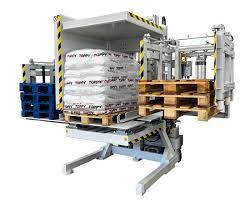When it comes to selling a product, packaging is far more than a box, wrapper, or bottle. It’s the first interaction a customer has with your brand, and often the deciding factor in whether they pick your product over a competitor’s. From design and functionality to sustainability and production efficiency, packaging carries weight at every stage of the buyer journey. Understanding the importance of product packaging can help businesses strengthen their brand identity, build trust with customers, and maximize sales.
Packaging as a First Impression
Shoppers make snap judgments. Studies have shown that consumers form an opinion about a product in just a few seconds, and packaging heavily influences that decision. Eye-catching colors, thoughtful typography, and clever design can stop someone in their tracks, while generic or poorly executed packaging might leave a product overlooked.
More than aesthetics, packaging conveys a story. It signals whether your product is luxurious, eco-conscious, playful, or practical. For example, matte black packaging often communicates sophistication, while bright patterns may suggest fun and accessibility. This instant communication sets expectations about the quality and value of what’s inside. In many ways, packaging is your silent salesperson.
Functionality and Protection
While design attracts buyers, functionality keeps them satisfied. At its most basic, packaging needs to protect the product. It shields fragile items from damage in transit, prevents leaks or contamination, and ensures freshness for food and beverages. A damaged product not only frustrates the customer but also increases return costs and erodes brand trust.
Functional packaging also enhances the customer experience. Resealable bags, easy-open tabs, and clear labeling make a big difference in convenience. Think of how frustrating it is to wrestle with packaging that’s hard to open or fails to preserve the product after one use. When packaging is intuitive and practical, it improves satisfaction and encourages repeat purchases.
The Role of Sustainability
Sustainability is not optional. More consumers want to support companies that prioritize environmentally friendly practices. Packaging is one of the most visible ways to demonstrate this commitment. Using recycled materials, biodegradable plastics, or designs that minimize excess material can strongly influence customer loyalty.
Eco-friendly packaging can also reduce costs in the long run. Lightweight, minimal designs often lower shipping expenses and reduce material waste. Businesses that invest in sustainable packaging not only contribute to a healthier planet but also position themselves as forward-thinking and responsible. In a competitive market, that alignment with consumer values can set a product apart.
Packaging and Business Efficiency
From a business standpoint, packaging isn’t just about aesthetics and ethics — it’s about efficiency. The right packaging solutions can streamline production, cut costs, and maintain consistency. Working with a reliable packaging machine manufacturer allows businesses to scale without sacrificing quality. Automated systems reduce errors, increase output, and provide precision that manual methods can’t match.
For growing companies, efficient packaging processes mean faster turnaround times, fewer returns, and improved customer satisfaction. It also makes it easier to adapt when scaling production or responding to seasonal spikes in demand.
Building a Brand Through Packaging
Packaging is also one of the most powerful tools for building brand recognition. Consider the iconic Tiffany & Co. blue box or the Coca-Cola bottle shape — the packaging is instantly recognizable, often before the brand name is even visible. Small businesses can take cues from this approach by ensuring packaging is consistent with brand identity across every product line.
Whether through a specific color palette, logo placement, or unique design feature, packaging creates familiarity. When customers repeatedly encounter packaging that feels cohesive, they associate it with reliability and quality. This consistency turns one-time buyers into loyal fans.
Final Thoughts
The importance of product packaging extends well beyond its basic purpose of containment. It serves as a marketing tool, a protector of goods, a symbol of sustainability, and a driver of efficiency. Businesses that see packaging as an afterthought risk blending into the background, while those that treat it as an integral part of their brand strategy reap long-term rewards.
By focusing on first impressions, prioritizing functionality, embracing sustainability, and investing in efficient production, companies can elevate their packaging from simple necessity to competitive advantage. Ultimately, great packaging is about creating trust, excitement, and connection with customers — all before they even use what’s inside.





